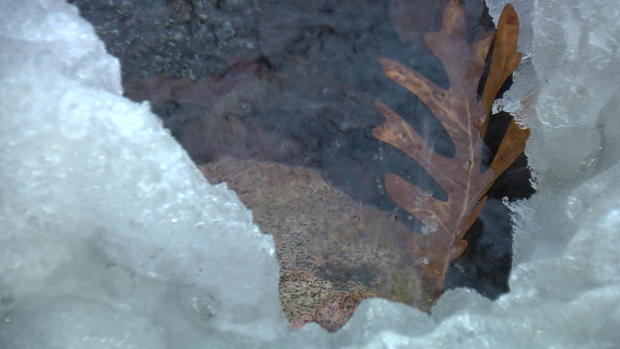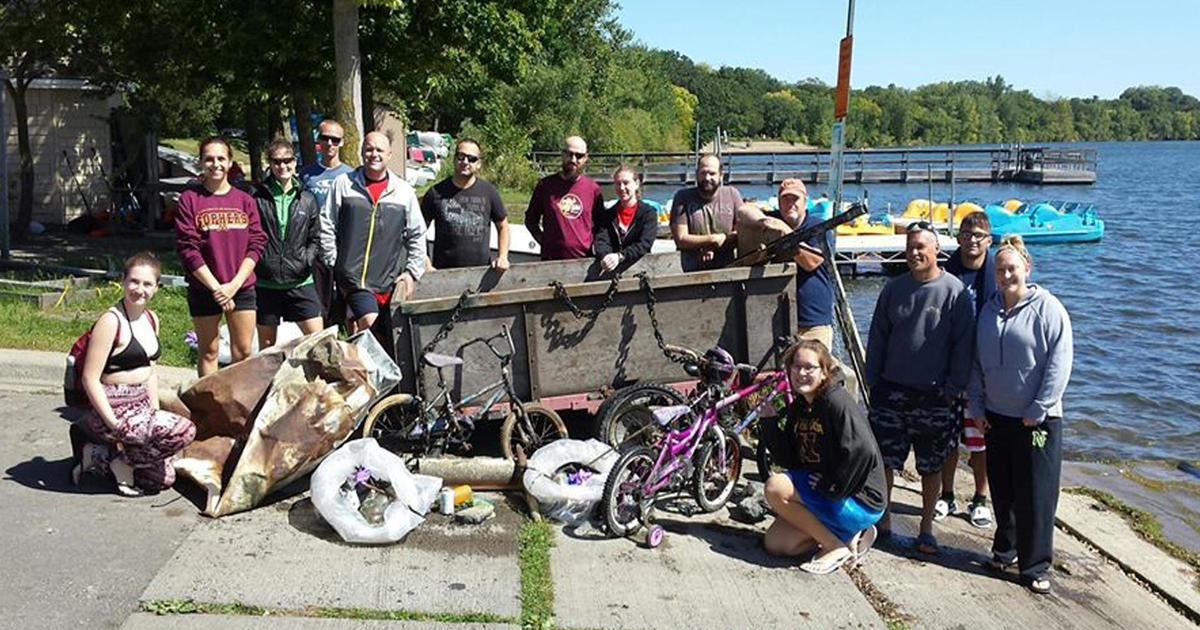How Does The Ground Thaw? And Are We On Schedule?
Originally published March 15
ST. PAUL, Minn. (WCCO) -- A week filled with temperatures in the 50s has Minnesotans excited to embrace the warmth, and hopefully see their yards thaw out.
We wanted to know: How does the ground thaw? And are we on schedule? Jeff Wagner learned gardeners can't get too excited just yet.
As snow mounds melt and field ponds form, our eyes tell us the thaw has begun. On the University of Minnesota St. Paul campus, a "frost tube" helps state climatologist Pete Boulay truly understand the depth of the frozen soil.
The tube is filled with liquid and spans about five feet below the surface. Tuesday afternoon, the liquid in the tube was frozen down to the 21.5 inch mark, meaning the ground was still frozen nearly two-feet deep.
How deep was the freeze this winter?
"Not much further, it was down to 23 [inches], so we've thawed about one inch so far in the last three weeks," Boulay said.
The thaw starts at the bottom of the frozen soil, where cold air struggles to reach as the calendar turns to spring. As April approaches, the surface soil begins to thaw as well, until both thawed ends meet in the middle.
"Bare ground will thaw earlier than grass will," Boulay said.
Frozen soil should be gone in the Twin Cities by the first week of April, which is right on schedule.
"The last two springs, frost was already out by now. But if you go to 2018, 2019, it was about the third week of April," he said.
How soon can gardeners put a shovel in the ground? Not for several weeks, said Julie Weisenhorn, extension horticulture educator with the University of Minnesota.
"Even seeds that we normally might put in early could possibly rot," Weisenhorn said.
Is there a way to feel the ground and sense if its ready?
"You could buy yourself a soil thermometer," she said, holding one up that's a little bit longer than a pen.
Weisenhorn said gardeners want the soil beneath the surface to be around 50 degrees, which likely won't happen until late April.
Plus, with all that melting and potential rain in the next few weeks, the ground will likely be too moist.
"Anything you try to put into the soil is gonna have a tough time because of the cold and the dampness," she said.
There are some gardening tasks you can start on, such as pruning fruit and oak trees. But limit how much you walk on your lawn until it has dried. That will keep the soil from compacting and give your grass a better chance to grow. Compacted soil creates less air, a poor growing environment for grass roots.
"If that soil is really spongy and it's quite wet, then you want to really stay off of it until it dries out," she said.




